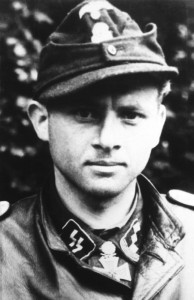The 11 January 1944 Galeazzo Ciano was shot. A prominent figure of the fascist regime, son-in-law of Mussolini. The 8 January, in the Hall of Castelvecchio in Verona, began the trial of the Social Republic in respect of the same Cyan and five others such as De Bono, Marinelli, Garvin, Pareschi and Cay on charges of betrayal of the Idea. The 10 January after hours 13 the ruling was issued: 30 years to Tullio Cianetti, death sentence for cyan and others. His wife Edda Mussolini attempted to save her husband by applying pressure to the father, but it was vain thing. The condemned were taken the next day in the polygon of Proculus and shot. To understand the reason of this tragic epilogue we must retrace the parable of Galeazzo Ciano. He was called "the son-in-law of the regime", Since in 1930 then 27-year-old married Edda, the eldest child of Benito Mussolini. Son of Constantius, count of Cortellazzo, He was a brilliant young man, generous and helpful, characterized by various literary tastes including the theater. His dream was to become a playwright. Law student worked as a journalist at antifascist warheads as the country and the world by Giovanni Amendola. The father, Naval Officer and then adhering to fascist party, he pushed for the son directed their lives toward a diplomatic career. In 1933 He became head of the Press Office of Mussolini and two years later Minister of Propaganda. He became interested in the development of radio and cinema city building plans. In 1936 became, much envied, Minister of Foreign Affairs. Unlike other fascist fanatics and of the time he maintained his sobriety by interpreting fascism as an element of strengthening nationalism in Italian, in an obvious political dimension, to strengthen Italy. It appears that a substantial ideological weight, Despite the political figure of cyan are individuals in opportunism. A politician who would have adapted to the Liberal and fascist Italy after-. Anti-German, together with Dino Grandi and Giuseppe Bottai expressed many doubts regarding entry into war and Germany. Despite this fatal irrevocable decisions fell in behind at the Duce, ready to welcome an eventual German victory of war. After the war and subsequently defeats that suffered the Italy sopragiunsero the events of 25 July 1943. He summoned the fascist Grand Council and the agenda of Dino Grandi claimed that Mussolini recuperated the warrant in the hands of the King. After an exhausting night of heated discussions until two and a half, the Grand Council annulled Mussolini with 21 votes in favour 7 against and one abstention. Among the votes against il Duce there was also that of Galeazzo. The optics that materialized that vote was yet another product of the instinct of Galeazzo who fancied a space in the post-fascist policy for people like him contributed to the fall of the regime. Had to get to grips with one's family. Il Duce was arrested. Large managed to repair in Lisbon, Coopers at the Vatican. Ciano was able to save himself as Coopers at the Vatican saw his last appointment as Ambassador to the Holy See. But this does not transpire, He followed his wife in the German Embassy and was taken to Munich. After the proclamation of the Republic was educated Social process to traitors, and then was transferred to Verona. It was his end. A man who knew how to ride all the opportunities that life served him, adhering to a wretched regime that instead of giving him the glory chasing dragged him into the abyss of history.
Hector Parker
